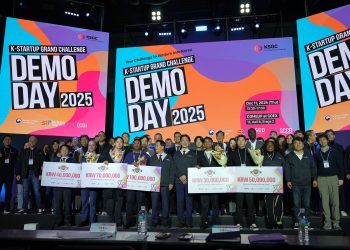In August 2025, the U.S. Department of Commerce rescinded the Validated End User (VEU) status previously held by South Korean semiconductor leaders Samsung Electronics and SK hynix. As a result, both companies must now secure individual licenses to import U.S.-origin semiconductor manufacturing equipment for their operations in China. This change, set to take effect in 120 days, represents a significant shift in U.S. export control policy, with direct implications for South Korea’s semiconductor sector and its strategic role in the global technology landscape.
U.S. Export Controls and Their Implications
Since 2022, the U.S. has implemented strict export controls aimed at restricting China’s access to advanced semiconductor technologies for national security reasons. Samsung and SK hynix were initially granted waivers allowing them to continue operations in China without individual licenses, supporting imports of critical tools for producing DRAM and NAND flash memory chips. Samsung’s Xi’an facility produces roughly 35% of its NAND flash output, while SK hynix’s Wuxi plant contributes around 40% of its DRAM output
With the VEU status revoked, these companies must now seek individual licenses for U.S. equipment, limiting their ability to expand or upgrade operations in China. This could slow technological progress and impact production efficiency (Tom’s Hardware, 2025).
Strategic Dependency on the U.S.
The policy change illustrates how South Korea’s semiconductor industry is caught between U.S. strategic objectives and China’s market potential. By controlling access to advanced chipmaking equipment, the U.S. indirectly dictates South Korea’s operational freedom in China. South Korean companies must now align with U.S. geopolitical priorities while trying to maintain competitiveness in a key market (WSJ, 2025).
The broader implication is that the U.S. wields influence over global semiconductor supply chains, forcing South Korea to weigh strategic autonomy versus economic benefits.
Historical and Ongoing U.S. Interventions in Korea-China Tech Cooperation
- Export Control Pressure
The U.S. has repeatedly urged South Korea to adopt export controls on semiconductor technologies similar to those imposed on China. The objective is to curb Chinese access to advanced chipmaking tools. South Korea’s partial compliance indicates how U.S. influence can limit its technology partnerships in China. - Tariff and Trade Pressures
Beyond export controls, U.S. trade policies have at times imposed indirect pressure on South Korea, such as tariffs and incentives favoring domestic or U.S.-aligned manufacturing. These measures encourage South Korea to reconsider investments and partnerships with China, reinforcing U.S. strategic priorities.
- Technology Transfer Restrictions
In prior years, U.S. policies have restricted the transfer of cutting-edge semiconductor tech to China. South Korean firms like Samsung and SK hynix have had to navigate these restrictions carefully to avoid penalties, which limits their technological collaboration opportunities.
Global Supply Chain Implications
These restrictions not only affect South Korea but also shift competitive dynamics in the semiconductor industry. U.S. companies such as Micron Technology could gain advantages as South Korean firms face operational limits in China.
Moreover, the situation highlights the vulnerability of a highly concentrated semiconductor supply chain, where policy shifts by one country can ripple globally, affecting production, prices, and innovation.
Conclusion
The revocation of VEU status for Samsung and SK hynix is a critical example of how geopolitics shapes technological and economic outcomes. South Korea faces the dual challenge of maintaining global competitiveness while navigating U.S.-led strategic constraints. Diversifying technology sources, strengthening domestic innovation, and carefully balancing geopolitical partnerships will be key for sustaining South Korea’s leadership in the semiconductor sector.






